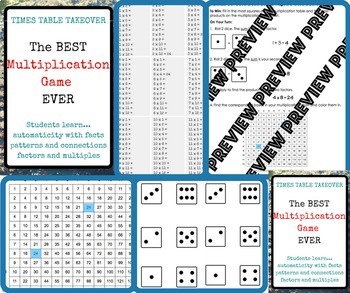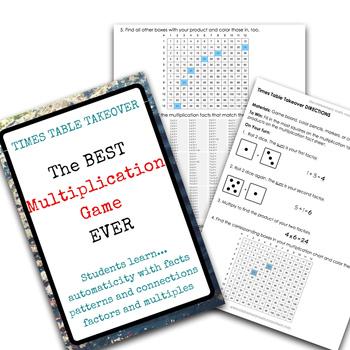Times Table Takeover: The BEST Multiplication Facts Game EVER!
- Zip
Description
*Distance Learning... this game works perfectly if students can print materials OR if they visit this interactive multiplication chart and use the interactive multiplication chart.
With this purchase, you'll find a lesson plan complete with Common Core standards for 3rd and 4th grade (this is also a great 5th/6th/7th grade review game), learning targets/objectives, game directions and materials, and discussion questions for a thorough and reflective wrap-up.
***You can save money by purchasing this game along with 3 other activities in this bundle.
Automaticity [aw-tuh-muh-tis-i-tee] is the ability to do things without occupying the mind with the low-level details required, allowing it to become an automatic response pattern or habit. It is usually the result of learning, repetition, and practice.
When students play this game, Times Table Takeover, they have multiple chances to learn and gain automaticity with their multiplication facts on each turn.
Automaticity is important for fact fluency. This games teaches students multiplication facts through repetition and the motivation to be efficient.
On each turn, players do a lot of math! They find the product of two factors (8 x 3 = 24), color in the product on a multiplication chart, find other multiplication facts with that same product (3 x 8, 2 x 12, 12 x 2, 4 x 6), and complete equations for each of these.
The winner is the player who has colored in the most products and completed the most multiplication equations.
Students see patterns in factors that share multiples, learn (the hard way!) about prime numbers, and gain automaticity and fluency with multiplication facts.
Want to earn TpT credit?
From your My Purchases page, click Provide Feedback. You'll earn credit towards future purchases every time you rate a product! Also, I find it super helpful to see your ratings and read your comments, so thank you!
You can also learn about my new products and sales by following me. Just click the green star on my store page!




